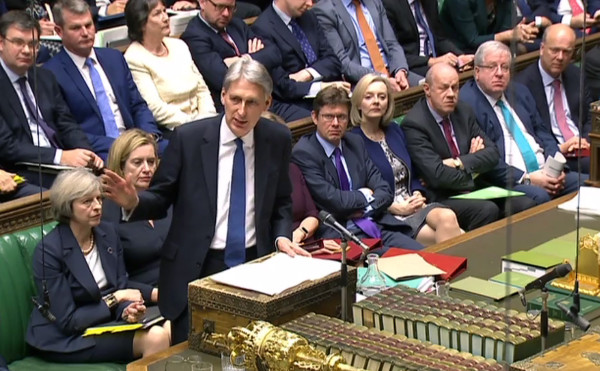

No policy changes are expected from the low key, 15-minute speech, which will not feature a full Budget or even a red box, but tax experts will be keeping their eyes peeled for any consultations from HM Treasury.
Consultations on trusts and value-added tax are being predicted from tomorrow's set-piece speech.
The Chancellor may bring some better news about the UK’s economic outlook with an update of the Office for Budget Responsibility (OBR)’s November growth forecast.
Ian Stewart, chief economist at Deloitte, said the OBR’s current forecast is for growth to come in at 1.4 per cent this year and 1.3 per cent next year, which he noted is "marginally more pessimistic than the average private sector forecaster".
"On balance I think they’ll stick with this cautious view, but there’s a decent chance they nudge up both years to 1.5 per cent," he said.
He also noted the OBR gave a gloomy long-term forecast for the UK’s productivity in November but there have since been signs of an acceleration in productivity growth. However, he did not think this would yet be reflected in any change to the OBR’s view on productivity.
The November forecast was dismal, with the OBR’s downward revision to the UK’s productivity outlook alone increased cumulative borrowing by £91bn between 2017-18 and 2021-22, according to the Resolution Foundation.
Borrowing in the current year was forecast to rise to just under £50bn, while real annual earnings were not forecast to return to pre-crisis levels until 2025 – leaving the country barely halfway through a 17-year pay downturn.
Mr Stewart said: "Since November, the economic outlook has brightened. Global growth has come in stronger than expected and government borrowing has fallen more quickly than forecast.
"The good news is that the improving trend in public borrowing will enable the OBR to pencil in substantially lower numbers for public sector borrowing in the next two years. In terms of the government’s target of eliminating the current budget deficit, excluding investment, the Spring Statement seems likely to show that most of the hard work of deficit reduction has been achieved."
The Resolution Foundation said if the Chancellor does deliver a short-term upgrade to economic growth, he will get a public finance boost worth £7bn-£11bn.
Matthew Whittaker, chief economist at the think tank, said this looked likely, as the economy looks healthier.
On productivity, for example, the UK recently recorded its two strongest quarters of productivity growth in six years. Productivity growth in 2017 has come in at 0.6 per cent, compared to the zero growth expected by the OBR in the autumn.
"Britain’s revised economic outlook is likely to give the Chancellor more fiscal leeway. However, the broader economic backdrop remains extremely challenging. Britain plunged from the top to the bottom of G7 economic growth league in 2017," said Whittaker.
Although the Chancellor has promised no big new policy changes this week, the Resolution Foundation notes that a few significant changes come into effect in the coming weeks, such as the increase in the National Living Wage to £7.83 and a benefits freeze for 11 million working age families.
"The Chancellor has said he plans to soak up the sunnier economic outlook next week, rather than make any policy announcements. But significant policy changes are still coming in just a few weeks’ time – with a pay rise for the lowest earners but a further squeeze on the living standards of low-income working families, driven by the freeze in working age benefits," he added.
"While the Chancellor is firmly committed to a short Spring Statement the challenges Britain faces, from weak growth to tight family finances, are likely to remain long lasting."
The Chancellor is expected to deliver his speech at around 12.30pm on Tuesday 13 March.



